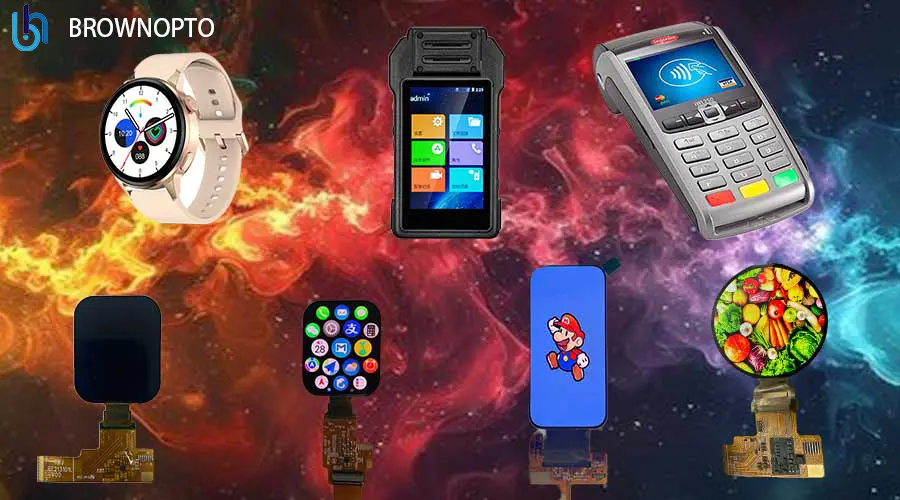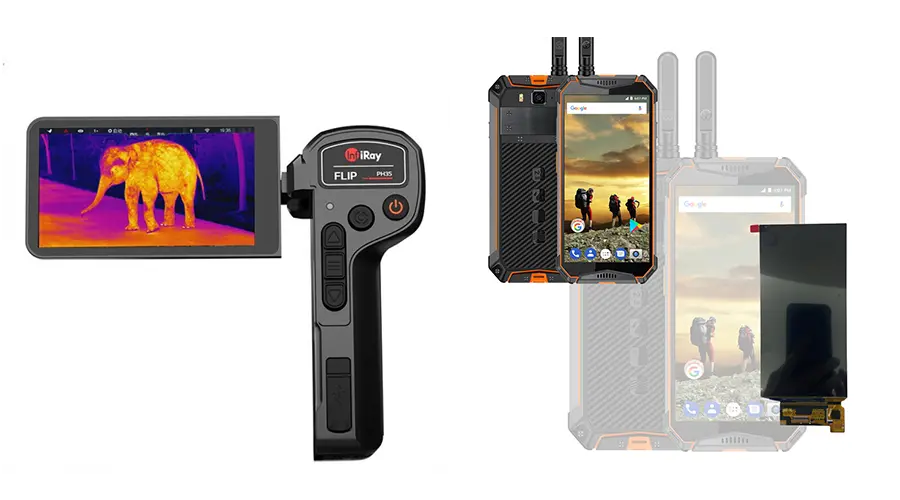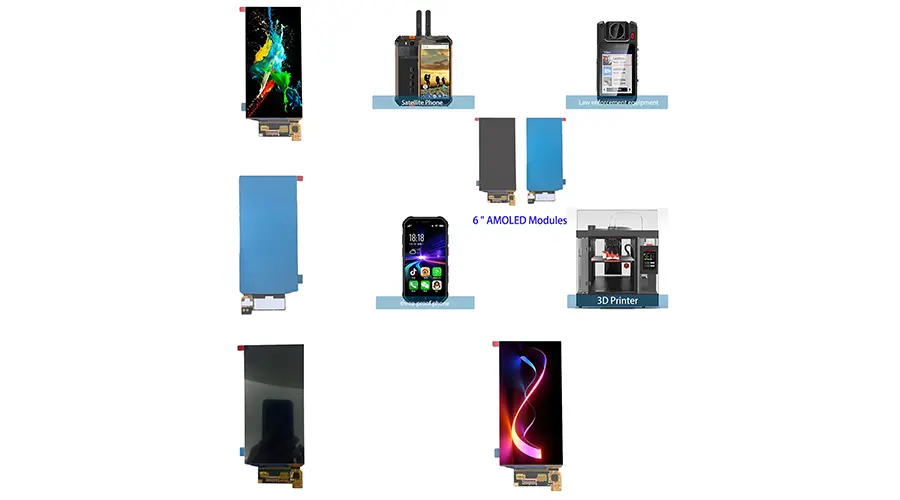A BROWNOPTO Engineering Case Study with MedTech Innovations Inc.
Client: MedTech Innovations Inc. — a U.S.-based innovator in point-of-care (POC) diagnostic systems
Application: Portable Blood Chemistry Analyzer for Emergency & Rural Healthcare
BROWNOPTO Product: Custom 4.40" On-Cell Touch LTPS AMOLED Display Module (Model: BR440102-A1)
Interface: MIPI DSI 2-lane, 60Hz refresh rate
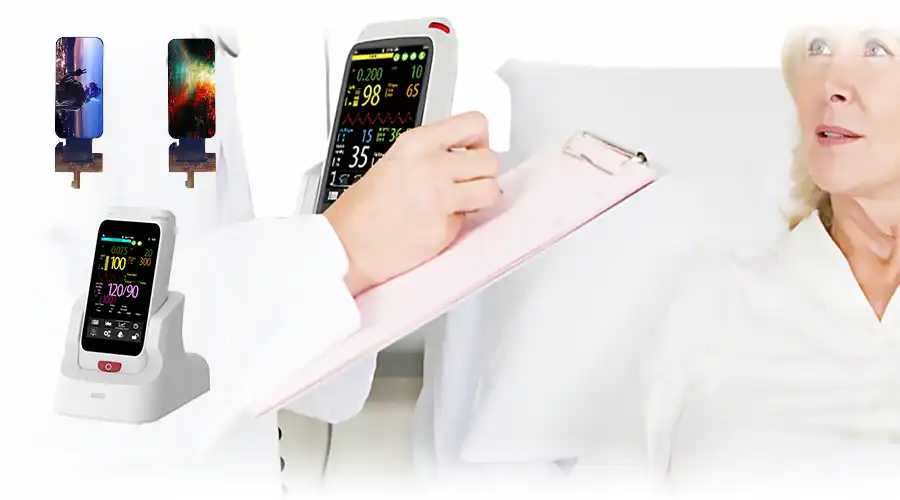
Project Background & Technical Challenges
MedTech Innovations sought to replace the legacy LCD in its flagship handheld blood analyzer with a next-generation display that could meet the stringent demands of clinical and field environments. The device is used by paramedics, lab technicians, and rural health workers—often in uncontrolled lighting, temperature, and humidity conditions.
The core display requirements included:
Sunlight readability: Minimum 600 nits brightness with anti-reflective (AR) treatment to ensure legibility under direct sunlight (≥100,000 lux).
Environmental robustness: Stable operation across -20°C to +70°C ambient temperature and 95% relative humidity (non-condensing).
Human factors: Glove-compatible capacitive touch with wet-finger rejection and low latency (<20 ms).
Form factor: Module thickness ≤0.8 mm to enable a slimmer, more ergonomic handheld chassis.
Regulatory compliance: Full adherence to RoHS 2.0 (2015/863/EU), REACH (SVHC < 0.1%), and halogen-free (HF) material standards for medical equipment.
Long-term reliability: 50,000+ hours of operational lifetime with minimal luminance degradation.
Off-the-shelf AMOLED panels failed to meet the mechanical durability and optical consistency required for Class II medical devices. MedTech needed a display partner capable of co-development—not just supply.
Co-Engineered AMOLED Display Solution by BROWNOPTO
BROWNOPTO engaged in a 6-month joint development program with MedTech’s hardware and firmware teams. The collaboration spanned optical design, mechanical integration, electrical validation, and regulatory documentation.
Key engineering milestones included:
Optical stack optimization: Integration of a hybrid HC (Hard Coat) + AR polarizer to reduce surface reflectance to <1.5% while maintaining scratch resistance (≥3H pencil hardness).
On-cell touch integration: Custom tuning of the CST3530 touch controller firmware to support 5mm gloved finger input and reject false triggers from moisture or palm contact.
Thermal management: Implementation of a low-thermal-expansion FPC (Flexible Printed Circuit) to prevent delamination during thermal cycling.
Power sequencing: Co-design of display power-up/down timing with MedTech’s PMIC to eliminate screen flicker during boot.
Color calibration: Factory-performed gamma and white-point calibration (D65, 2.2 gamma) to ensure accurate rendering of medical UI elements (e.g., warning icons, trend graphs).
Technical Specifications
| Parameter | Specification | Validation Standard |
|---|---|---|
| Display Type | 4.40" LTPS AMOLED | — |
| Active Area | 54.3 × 115.8 mm | — |
| Resolution | 568 × 1210 pixels (Full HD+) | Pixel density: 296 PPI |
| Brightness | 600 nits (typical), 800 nits (peak) | Measured per ISO 13406-2 |
| Contrast Ratio | 100,000:1 (typical) | Infinite in dark conditions |
| Touch Technology | On-cell capacitive (CST3530 IC) | Supports 10-point multi-touch |
| Viewing Angle | ≥85° (all directions) | ΔE < 5 at 80° |
| Module Thickness | 0.75 mm (excluding FPC) | — |
| Interface | MIPI DSI 2-lane, 60 Hz | Compliant with MIPI Alliance v1.3 |
| Operating Temp. | -20°C to +70°C | IEC 60068-2-1 / -2-2 |
| Storage Temp. | -30°C to +80°C | — |
| Compliance | RoHS 2.0, REACH, HF, ISO 10993-5 (cytotoxicity tested) | Full material declaration available |
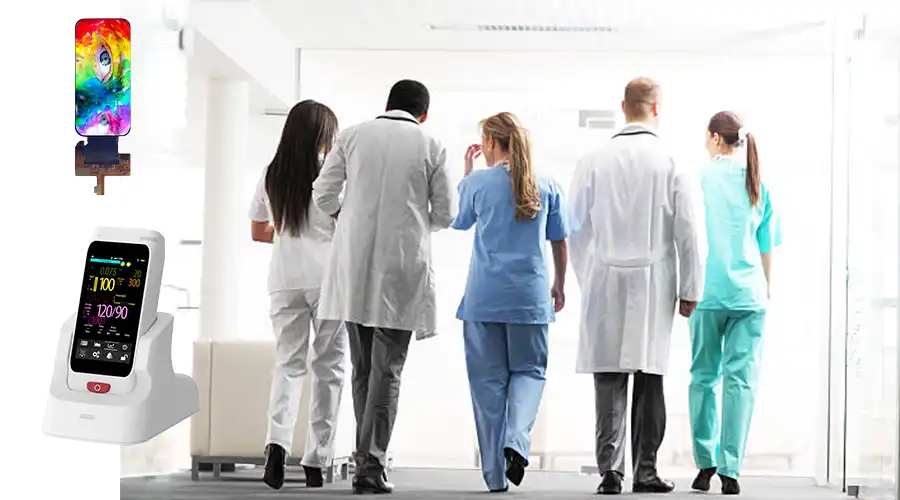
Validation & Field Performance
The BR440102-A1 module underwent rigorous validation at both BROWNOPTO and MedTech facilities:
Environmental testing: Passed 240-hour high/low temperature cycling (-20°C ↔ +70°C) and 96-hour 95% RH humidity exposure with no delamination or mura.
Mechanical robustness: Survived 3 drops from 1.2m onto plywood (per IEC 60601-1-11) with no functional failure.
Optical consistency: Luminance uniformity >85% across the panel; color shift (Δu’v’) < 0.01 under viewing angle variation.
Clinical pilot: Deployed in 500 units across 12 U.S. emergency medical services (EMS) agencies over 12 months—zero display-related field failures reported.
“BROWNOPTO didn’t just deliver a display—they embedded themselves in our NPI process. Their engineering team solved touch noise issues we’d struggled with for months and ensured the AMOLED met FDA documentation requirements for material traceability. This partnership was instrumental to our product launch.”
— Lead Hardware Systems Engineer, MedTech Innovations Inc.
Why BROWNOPTO AMOLED Displays Excel in Medical Applications
BROWNOPTO’s approach goes beyond component supply. We offer end-to-end display engineering for mission-critical applications:
Application-first design: Displays engineered for real-world use—not just datasheet specs.
Vertical integration: In-house optical coating, touch integration, and reliability testing.
Regulatory support: Full material compliance documentation (RoHS, REACH, HF, ISO 10993) for medical device submissions.
Scalable NPI: From prototype to mass production with consistent quality (PPM < 50).
Global support: Engineering teams in Asia, North America, and Europe for rapid response.
Ready to integrate a high-reliability AMOLED display into your medical, industrial, or defense device?
Contact BROWNOPTO for a custom display consultation—engineered for performance, built for reliability.
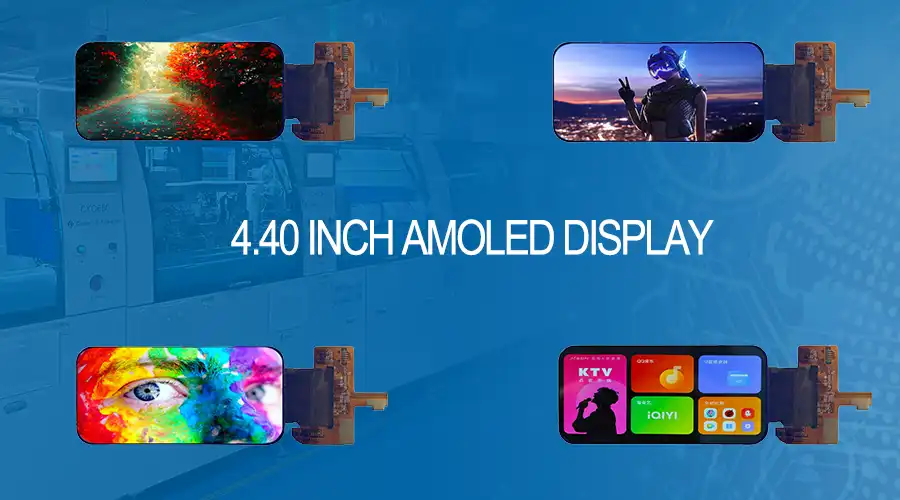
FAQ
What causes OLED burn-in and how can it be prevented?
Burn-in occurs when organic materials degrade unevenly due to prolonged display of static images. Prevention includes using auto-dimming, screen timeout, pixel shifting, logo dimming, and avoiding high brightness for static content.
Are OLED displays suitable for outdoor or high-brightness environments?
Standard OLEDs struggle in direct sunlight due to limited peak brightness. However, some models feature higher nits output and anti-reflective coatings. For full outdoor use, consider Mini-LED or specialized high-brightness OLED variants.
How long do OLED displays typically last?
OLED lifetime is typically rated at 30,000 to 100,000 hours to L50 (half brightness). Lifespan depends on usage patterns, brightness levels, and operating temperature. Blue pixels degrade faster, so white balance may shift over time.
Can OLEDs be used for always-on displays (AOD)?
Yes — OLEDs are ideal for AOD due to low power consumption when showing dark themes or small icons. To reduce burn-in risk, use dynamic positioning, low brightness, and limit active pixels.
What is the difference between AMOLED and PMOLED?
AMOLED (Active Matrix OLED) uses a TFT backplane for fast refresh and large resolutions, ideal for smartphones and wearables. PMOLED (Passive Matrix OLED) drives rows/columns directly, suited for smaller, simpler displays with lower cost.
Do OLED displays support touch functionality?
Yes — most OLED modules integrate capacitive (PCAP) or resistive touch layers. Flexible OLEDs often pair with curved touch sensors for seamless wearable and automotive designs.
Latest articles
-
Why 1–2" AMOLEDs Are Key to AR/XR in 2025
Why 1–2 Inch AMOLED Displays Are Becoming Essential in the AR/XR Boom (2025 Industry Insight)body {f
-
Understanding OLED Display Technology: Principles, Performance & Applications
OLED (Organic Light Emitting Diode) displays are a class of self-emissive display technology in whic
-
From Wearables to AR Glasses – How OLED Displays Are Redefining Visual Experiences in 2025
By 2025, OLED (Organic Light-Emitting Diode) technology has transitioned from luxury smartphone disp
-
Stretched Bar LCD Displays for Retail: Boost Sales & Engagement in Supermarkets
Discover how stretched bar LCD displays enhance supermarket shelf-edge marketing, drive sales, reduc
-
Stretched LCD Solutions for Restaurants and Hospitality Venues
Stretched LCDs offer sleek, high-brightness displays perfect for restaurant menus and hospitality si

